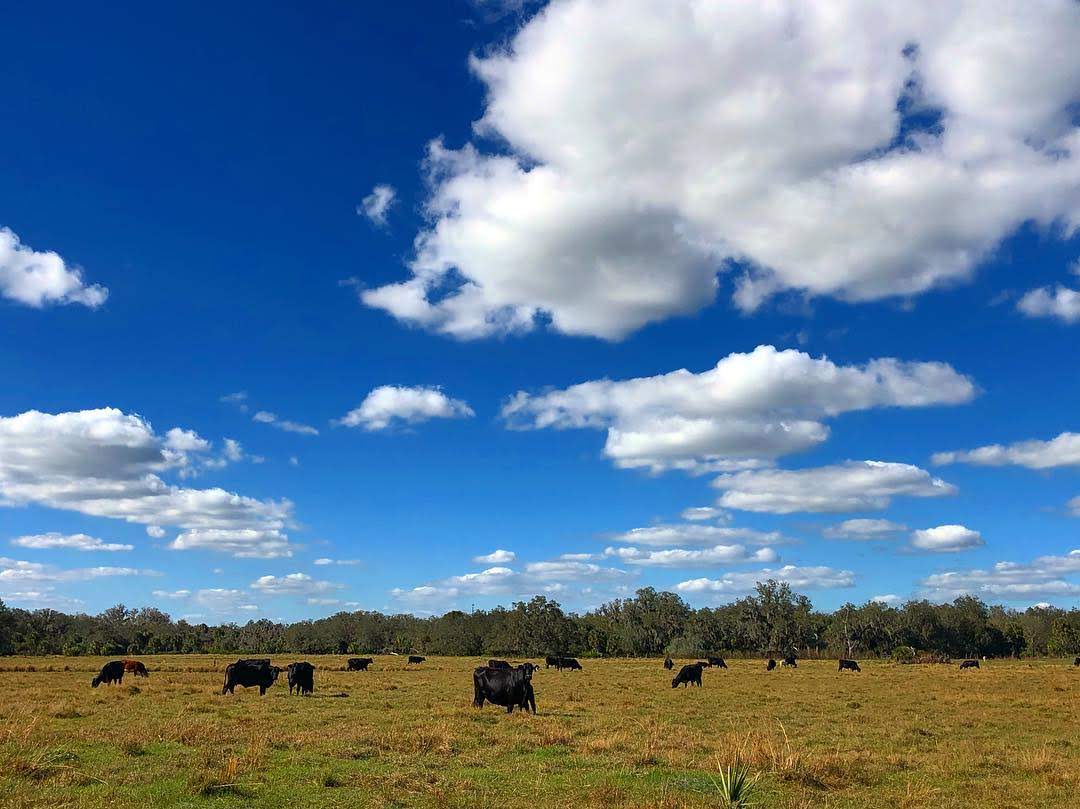Winter months can be tricky when it comes to feeding your pregnant or lactating beef cows in Florida. The changing day length, and weather patterns limit grazing options in farms that rely on summer perennial grasses. In Florida summer grasses supplying the bulk of nutritional content for the average beef herd. Keeping this in the back of our minds is critical to ensuring that pregnant cows, and their developing offspring have enough nutrients to meet their bodily demands. Here are some things we can do to prepare for the coming months and ensure that our mommas are well taken care of. At the end of the day “If momma isn’t happy, nobody is happy”.

They are what they eat
Are you aware of the nutritional content of what you offer to your animals? Is this enough to meet their nutritional demands? Having an answer to these questions is a crucial step in providing a wholesome meal for your animals to enjoy. Focus on nutrient content: We can start by performing a feed analysis from a reputable source for figuring out what we are offering and what we are lacking. Nutritional deficiencies can be costly to our cattle operation. Keep in mind that overdoing can be as bad. Overfeeding can have financial and physiological repercussions on our livestock and on our pocketbooks. Here are some good feed laboratories that you can use to analyze your forages and feed rations. You can obtain a ration formulation specifically derived from the data obtained from the analysis of your feed and forage.
Feed and forage testing laboratories:
- Dairy One – https://dairyone.com/
- Agricultural & Environmental Services Laboratories – https://aesl.ces.uga.edu/
- UF/IFAS Forage Extension Laboratory – Click on the link: https://bit.ly/3kiJuve
Typically, summer perennial grasses such as Bahiagrass will have limited amounts of crude protein (7-12%) and variable digestibility (close to 41-50 % dependent on the maturity stage of the plant). Studies have shown that adequate fertilized pastures have superior levels of crude protein than those that haven’t been supplied with the needed nitrogen for optimal growth. The nitrogen taken up by the plant creates essential components that in turn will increase protein values on our pastures. Keep in mind that nitrogen is just one of several macro and micronutrients beef cattle obtain from forage and supplemental feed, which plants obtain from the soil. If not replenished, pastures and cattle will eventually suffer from malnutrition.

A feed analysis will shed some light on the current diet and will help you adjust target specific amounts of supplementary feedstuff (alfalfa hay, pellets, etc.) for specific metabolic needs. Another quality assurance practice to adopt would be to test those supplementary feedstuffs that you intend to feed to your animals and/or read the label for specific information on nutritional content.
Are you feeding enough?
Avoiding underfeeding is especially important to pregnant and lactating females. Strategic group feeding by metabolic stage is another way to ensure pregnant and lactating cows can access essential amounts of feed with minimal bullying by other animals in the herd. There are several nutritional requirement tools and publications (click on the link: https://bit.ly/3kfmZY8) developed to ensure that we understand and offer the adequate amounts of ingredients to fulfill the metabolic needs of our pregnant and lactating animals.
Furthermore, assessing the body condition of your cows and heifers is a great way to monitor individuals as well as selecting those animals that are suitable for our operation and culling the ones that are not.
Are you paying too much for that supplemental feeding?
Selecting the source of supplemental feed can be confusing. We often find clients overpaying for nutrients or feedstuffs to ensure that herd stays in good health throughout the gestation and lactation periods. Here are two possible practices that may help you reduce feeding costs and possibly improve your bottom line: Consider investing in soil fertility and cool season forage production.

Soil fertility – amending your pastures to correct for pH imbalances as well as nutrient deficiencies can go a long way. Planting livestock forages is certainly cheaper than purchasing them is some cases during winter months. But before we go putting out seeds, we need set the stage for optimal growth; hence the recommendation for routine soil analysis to be performed. More information on how to test your soil can be found (click on the link: https://bit.ly/3EmEeyR), or at your local UF/IFAS Extension office.
Cool season forages selection – Now is the time to source cool season forage seed. Cool season annual forages can help us offset the costs of feeding in winter and spring, those times when our summer grasses go dormant. Planting clovers, cereal grains and other proven pasture plants may reduce feeding costs, reduce subsequent costs associated with weed control, and even reduce parasite loads in some cases. Depending on the area of Central Florida there are specific crops and cultivars that will do better than others, and your local Extension Agent can help you select the correct forage. A list of the evaluated cool season forages for Central Florida can be found (click on the link: https://bit.ly/2XwSrsu). Stockpiling forage can be another option that can extend the grazing season in areas where cool season forages don’t do well.
Feeding those females can be a game of cat and mouse, especially for small beef cattle herds. But being strategic in supplying what our pregnant cows and heifers will need in the coming months is a big piece of the economical sustainability of our operation. If you would like to have more information on the topic, contact the UF/IFAS Extension Hardee County office at 863-773-2164.
 0
0
